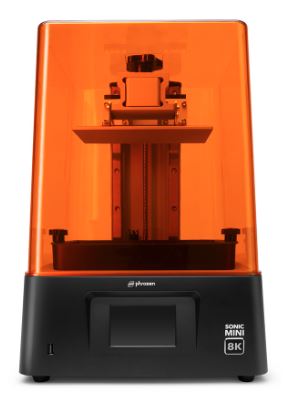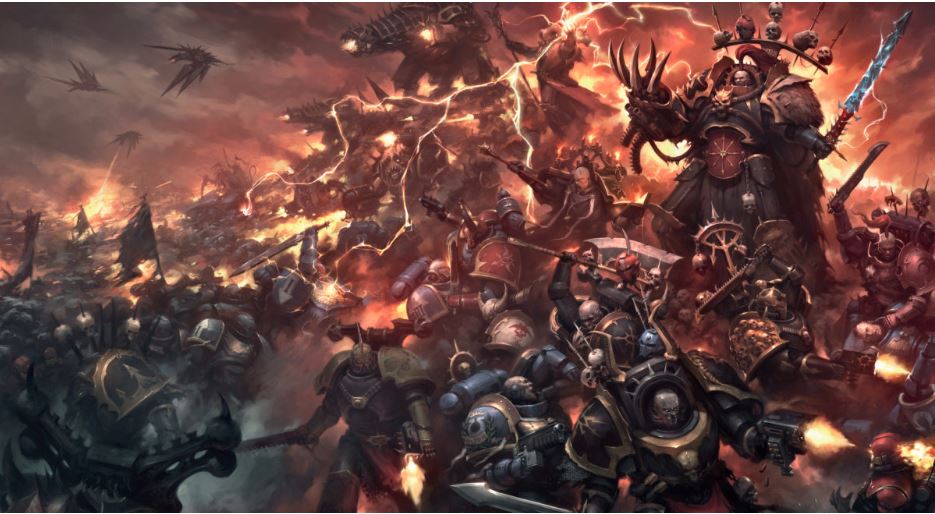Hey everyone, in this weeks segment, we will look at how technology changes can affect the market you are operating in dramatically.
Welcome back to another article from The Other Side. In this segment, I draw upon my 12 years working in the gaming industry and look at the murky area where business and game design overlap.
I’m excited to share my thoughts and insights on the ever-evolving world of gaming. Technology is constantly changing and it’s having a major impact on the way we play and experience games. From the graphics and gameplay to the way we interact with other players, technology is shaping the future of gaming in ways we never thought possible.
For this week’s entry, we’ll be discussing how changes in gaming technology affects the games we love. Specifically, how new technology can change the playing field and suddenly bring competition where previously you dominated with your brand.
When we speak about Trading Card Games, there are “The Big 3”, and then everything else. These games are Magic the Gathering, Pokémon and Yu-Gi-Oh!. For the longest time, these games never had any real competition. A few showed up that looked promising, like Force of Will, or CardFight!! Vanguard, but outside of Japan, these games were nowhere near the level of the top 3. Both are great games and fun to play, but the brands that backed the big 3 were just too big for anything else to really compete with them.
The biggest shake up in the industry came along when Activision Blizzard took back the rights for the World of Warcraft Trading Card Game and created Hearthstone. From an industry perspective, this digital game changed everything. My colleagues and I were all desperately trying to get beta keys from our contacts to jump in and play. The game was incredible and really brought to life the fantasy of card gaming. The sounds, the voice lines and the smashing effects after dragging the attack cursor over the opponent’s face, made the game come alive. Blizzard had also tapped into the advantages of being digital. It had cool mechanics that you couldn’t do in a physical TCG, no physical inventory, no secondary market to compete with or manage, and so on. The game was such a huge success. After its launch, the online card market got flooded with clones and forced the rest of the industry to re-evaluate its position on digital card games. Magic the Gathering Arena wouldn’t exist as it does today if Hearthstone had never entered the market. Part of the reason for this was that Wizards of the Coast simply didn’t see a need to compete with its own physical product lines, especially when they had a Magic Online client from the early 2000’s running. The big 3 eventually saw the potential and stepped up to take advantage of the market now that new technology had come along and changed customer expectations.
With that little history lesson out of the way, I want to move into the main brand of focus for this article. A brand that I have adored since I was a kid is the Warhammer brand created by Games Workshop back in 1987 (that’s right, their game is as old as I am).
For those unfamiliar with the brand, it’s a tabletop miniatures game where players bring armies, have objectives and try to battle over victory points or annihilate the opposition. In terms of complexity, Both Age of Sigmar (Fantasy setting) and Warhammer 40,000 (Sci-fi setting) are extremely complex games. Understanding how all the stats line up and all the rules of the main game along with faction and unit rules makes the game really hard to approach for a complete newbie.
To get into the game, players choose an army they think looks cool and start collecting the units they like within that army. Units are given point values and your army must conform to a points limit and any extra rules (such as minimum number of infantry units) to be considered legal for the table top.
This is an expensive hobby. A starter set for any given army that gives you a discount over buying the models individually will cost around £90 ($110 USD). While this will work as a starting point, you will need to understand the rules of your army so you should probably get a Codex (a rules book for your army) which costs around £32.50 ($40 USD). The miniatures come unpainted and unassembled so you will also need to pick up paint, paint brushes, undercoat spray cans, glue, files (for removing bits of plastic after you clip the bits out), clippers and so on. You could pick up the base starter set for the game and go from there, but you will need all of the accessories and paints to get into the hobby.

Compared to a deck from a TCG, you could argue that an army could be considered a similar price depending on what you need and how many armies you collect.
Those of my readers on the ball will think prices may seem pretty high for plastic kits. They are, the mark up on these products is actually insane. Even when everyone who looks into this hobby knows this, people are still happy to spend huge sums of cash on their armies. The reason that Games Workshop is able to do this is because their IP is so strong.
At the time of writing, a deal has been confirmed for Henry Cavil to create a TV series for the Warhammer brand and I’m beyond hyped to watch it. Warhammer is so much more than the tabletop game. There are literally 100s of books and stories that span out over 35 years to tell the stories of the universe and the characters. There have been many video games over the years that expand and build into the stories of the tabletop game. Interestingly, there are a lot of games that are not great and make you question why Games Workshop would license them. The reason that they are quite liberal with the license is that for the longest time Games Workshop didn’t care how the games performed. The reality was that every person who decided to walk through the doors of a Games Workshop store after being exposed to the brand would convert (spend money). The lifetime value (LTV) of a Warhammer player I once heard was around £30,000 ($36,700 USD). That said I heard this years ago and I don’t have exact sales figures that I could display to back this up. The number today is probably a lot higher. When I tried to think of a competitor to the Warhammer brand, I had to Google miniature games like Warhammer because I simply didn’t know one off the top of my head.
Times have changed a lot since 1987. In fact, one of the biggest threats to Warhammer is the rise of affordable 3D printers. Before these devices started taking off, it was extremely hard to compete with the distribution network Games Workshop already had in place. They were in hobby stores, they opened their own hobby stores and everyone interested in tabletop miniature games knew them. Unlike the TCG market, that industry did not have a ‘Big 3’. There was Warhammer and everything else.

3D printers are a fascinating concept. In the long run, we will be able to create replacement parts for machines, cars or other things we need without ever needing to ship them. Long term Sci-Fi goals would be to 3D print working organs to eliminate the need for a transplant list. Maybe someday we will even print our new gaming consoles.
In the meantime, people are using them to 3D print miniatures, with many of them being proxies of Warhammer models. There are many YouTube videos of people 3D printing thousands of dollars of miniatures for a fraction of the price that buying them from Games Workshop would cost. This new technology created a unique way of generating income on platforms like Esty. People started creating stores to 3D print miniatures from files that they would print and then ship to you. These files were tied to companies that run a Patreon subscription service, where you get new files each month you can then print. People then advertise these miniatures on Etsy and print to order. The space is getting more and more crowded, but many people owning 3D printers are making really good money from it.
While Warhammer is protected by its copyrights, this doesn’t stop pirates recreating and selling files for people to print models very similar to Warhammer miniatures. To help protect its IP, Warhammer doesn’t allow proxies (imitation models) to be played at its events or in its stores to force people to buy the official product lines if they want to enjoy the hobby. You would think that this signals the death of the traditional business model of Games Workshop. Soon everyone will just print their models for a fraction of the price and the prices of the official products will be forced to come down. The irony here is that people printing pirated versions of the official products are doing so because they are deeply invested into the brand. What normal person would go through all of the effort buying a printer, learning how to use it, finding the files and buying them to print out proxies to play Warhammer if they didn’t adore the brand? This is likely to be how Hearthstone was for the rest of the TCG industry that just opens the doors further rather than collapsing the older market. The player printing the files still needs the game designers of Warhammer to keep creating the content for them to enjoy the hobby. If everyone started printing and stopped buying from Games Workshop, their game would die. So the game designers are actually a great safeguard for the IP because people love their work and the universe that has been created alongside it.
We can see how Games Workshop has adapted to new technologies by introducing new online services such as Warhammer+ where fans pay a monthly subscription and get access to books, painting tutorials, animations and so much more from the Warhammer brand. This begs the question, will there at some point be a similar such service where people could 3D print miniatures directly from Games Workshop? The short answer is no. The longer answer is that based on Games Workshops place in the market, they own it and don’t have a need to make any drastic changes to keep up with the rest of the market. The other issue is that if the files to print these miniatures were ever shared, you would have the internet full of unlicensed resellers who do not care how the brand is represented having free reign to resell the miniatures, cutting out sales from Games Workshop.
If I had to think of a potential solution that included 3D printing, I would consider if Games Workshop would create its own 3D printer that people could buy and print from the Warhammer+ site. The hardware would not store any local copies of the files and those files could only work on the official Games Workshop printers. The advantages to this would be that there would never again be any inventory risk to any stores or logistics for shipping different products all over the world. The Warhammer stores would be opened up to focus more on table top and hobby space vs having inventory in store, and certain limited edition models could be made store exclusive print to order. The opportunities are there and the technology may prove to be a great step forward for Games Workshop to push its brand even further.
Games will always adapt and move forward with new technologies or they will fall behind. Until something forces old titans of their various industries to make a change, this will feel very slow and open the doors for new companies to enter markets previously considered impossible to compete in.
That’s all for this week’s article, as always if you would like to hear more of what I’m working on and get some more industry insights or maybe even score a free beta key in the future for a project I’m working on, be sure to sign up for my mailing list.


